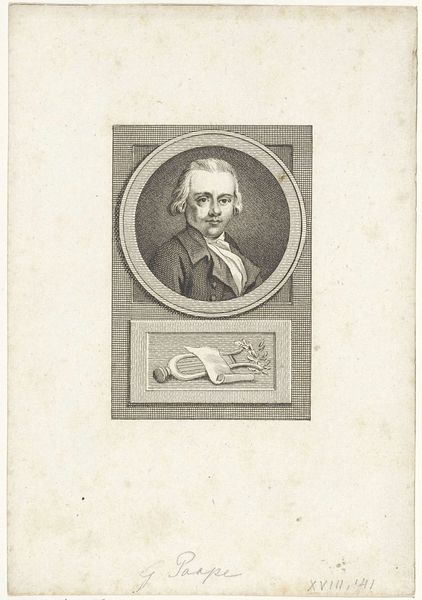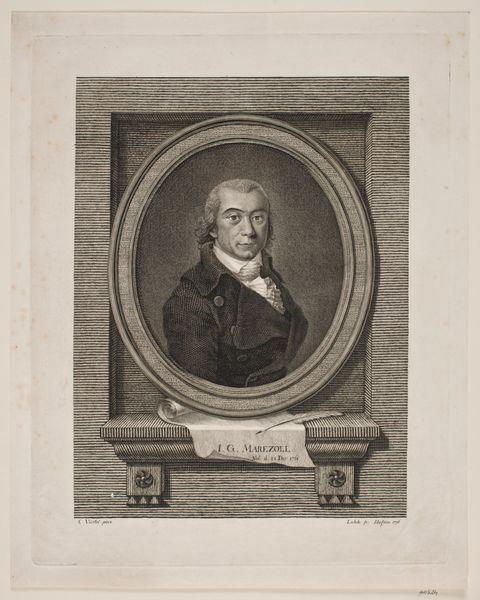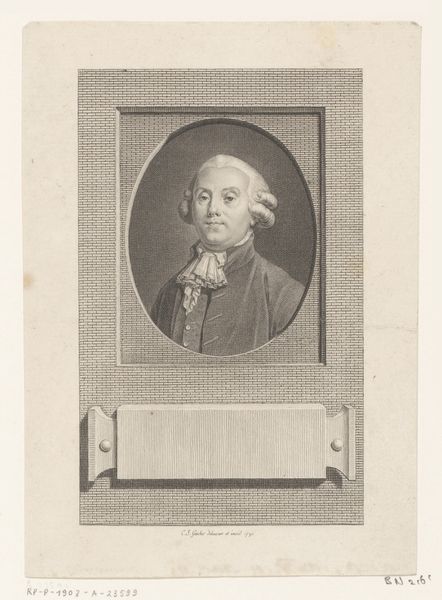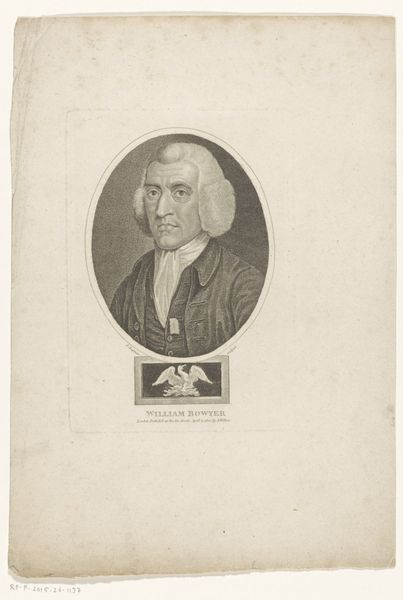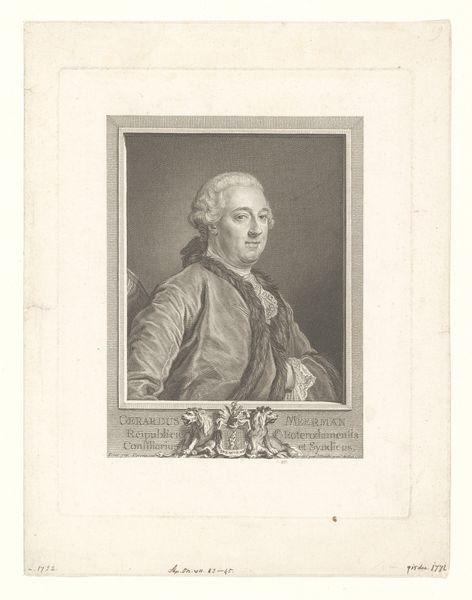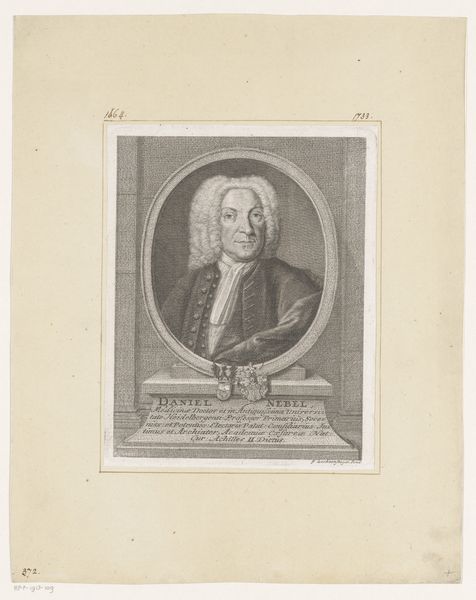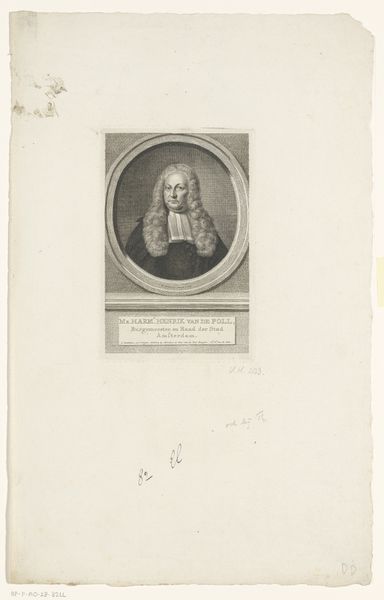
print, engraving
#
portrait
#
neoclacissism
# print
#
old engraving style
#
personal sketchbook
#
geometric
#
line
#
engraving
Dimensions: height 160 mm, width 113 mm
Copyright: Rijks Museum: Open Domain
Editor: So, here we have Reinier Vinkeles' "Portret van Pieter 't Hoen", dating from 1783 to 1795, residing here at the Rijksmuseum. It’s a print, an engraving. It feels very formal, almost…stiff. What jumps out at you about this piece? Curator: The engraving speaks volumes about production and consumption in the late 18th century. Notice the precise lines, the geometric frames. This isn’t just about portraying an individual; it’s about the labour involved in producing this image and its dissemination. What can we infer about the tools and techniques from its appearance? Editor: Well, it's so precise... like each line was carefully considered and etched. Was printmaking a very laborious process back then? Curator: Absolutely. Each line involved manual labour. Copper plates, acids, precise application – it was a skilled craft. Now, consider the context: Neoclassicism. It’s a style often associated with order and reason, reflective of the emerging merchant class and its demands. Is that geometric quality also reflective of enlightenment ideals? Editor: That's a good point! The order and control you see in the image... I never thought about that reflecting societal values. What about the books below? Is there anything interesting we can infer from them? Curator: Precisely! The inclusion of books and quill highlights Pieter 't Hoen’s connection to literature and knowledge. Consider this engraving in comparison to oil painting - a much cheaper and repeatable medium. Also, thinking about these items as commodities traded and consumed offers a very different perspective of it, wouldn't you agree? Editor: It does. I had looked at it just as a historical record of this person, but the materiality really says more about its place in the culture. I'll never look at engravings the same way! Curator: Exactly. By investigating its materiality and modes of production, the engraving comes to represents labour and class!
Comments
No comments
Be the first to comment and join the conversation on the ultimate creative platform.

